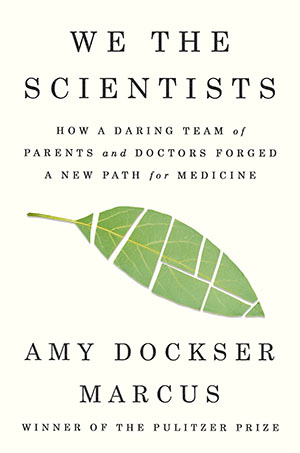How a daring team of parents and doctors forged a new path for medicine.
Addison and Cassidy, the twin daughters of Chris and Hugh Hempel, had passed their first and second birthdays as seemingly normal and healthy girls until a terrible flu brought them to a doctor’s office. Multiple tests and frustrating dead ends revealed the horrific truth: The twins suffered from an extremely rare and fatal cholesterol-metabolism disorder called Niemann-Pick disease type C, which afflicts fewer than 500 children worldwide. Such a small potential market had little chance of attracting the attention of the trillion-dollar pharmaceutical industry and the army of public and private scientists and clinicians whose work normally makes miracle treatments and cures happen. If the Hempels wanted their girls to live, they’d have to do some of the science themselves.
Rare diseases remind us that medical breakthroughs too often depend on big numbers. For one thing, a typical phase 3 clinical trial can require up to 3,000 volunteers or more—larger than the entire population affected by many rare conditions. Not all rare diseases are so extremely uncommon. The FDA defines a rare disease as one that affects fewer than 200,000 people in the U.S. There are nearly 8,000 such conditions, impacting up to 25 million Americans. But often even six-figure patient populations are not enough to incentivize pharmaceutical companies to risk the billions it costs to develop these drugs.

Congress recognized this when it passed the Orphan Drug Act of 1983, giving special regulatory and tax exemptions to “orphan drugs,” so-called because their tiny economic potential often caused them to be ignored. The law grants companies seven years of market exclusivity along with tax credits, fee waivers, and other incentives. In the 40 years since, the FDA has approved more than 1,100 rare indications for more than 7,000 rare diseases.
The wonderful promises of exciting new medical technology make it to the rest of us only after flowing through a narrow bottleneck of scientists and doctors. But what if that bottleneck could be widened, with useful contributions from people with the most at stake—those with rare diseases and their families?
Pulitzer prize-winning journalist and longtime Wall Street Journal reporter Amy Dockser Marcus has spent decades writing about the challenges that face “citizen scientists,” members of the public who often make important contributions despite their lack of credentials. Her new book We the Scientists compiles the stories of a dozen families who simply couldn’t wait.
Spoiler alert: For most of these kids, there is no happy ending. Their diseases are almost always fatal. The book is well written for a general audience, with heartwarming, insider details about the daily lives of otherwise ordinary families and the clinicians and researchers they encounter. I enjoyed the colorful anecdotes mixed with easy-to-understand discussions of the science, and you’ll reach for the tissue box more than once while you read the tragic choices these parents face. But ironically, that desperation itself is what drives the parents to do things no professional researcher would attempt.
Parents can sometimes let hope trump the facts, holding on too long even when a treatment clearly doesn’t work.
For Chris Hempel, the twins’ mother, hope was a new treatment based on a drug that had shown promise in mice. Despite her lack of medical or scientific training—she was a political science major who worked in PR after college—she scoured the research literature until she stumbled upon the mouse study, then doggedly followed up with researchers, the manufacturer, and eventually the FDA itself, which she successfully convinced to approve a compassionate use request.
We the Scientists isn’t a how-to manual, though the helpful footnotes will lead you to important resources if you find yourself in similar circumstances. Amy Dockser Marcus, a Harvard-trained bioethicist, presents the many nuances of patient-led research. Unlike professional scientists, trained to look objectively at the data, parents can sometimes let hope trump the facts, holding on too long even when a treatment clearly doesn’t work. What parent, knowing that this trial could be their only chance, would want to risk their kid being in the placebo arm of a randomized controlled trial—even if in the long run a double-blinded study is better for science?
But parents bring other contributions that professionals can’t match: a knowledge of the research (especially in an under-studied rare disease), an ability to marshal resources where and when necessary, a sensitivity to how much of a dosage is too much for the patient, and of course, a sense of urgency that only the desperate parent of a dying child can feel.
This is a short book, mostly focused on Amy Dockser Marcus’ reporting of one genetic condition, so it doesn’t address other important patient-led research communities, like the open source artificial pancreas system or the Rarebase public benefit precision medicine company. The Right to Try Act, which allows access to certain unapproved medications without FDA involvement, came too late to benefit most of the cases in this book, and isn’t discussed. Some of the factors that slow scientific research are only briefly mentioned, like the inefficiencies of peer review, or the ways even simple research questions can get bogged down by institutional review board requirements. But ultimately the book is an inspiring reminder that rare diseases aren’t the only branch of medicine that can benefit from an active and engaged public. The Patient-Led Research Collaborative, for example, played a key role in the identification of long COVID as a serious condition.
Any of us, faced with challenging medical conditions for us or those we love, can be scientists.








